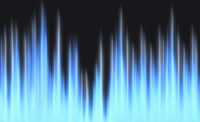Icelandic volcanic spewed 3X as much toxic gas as all man-made sources in Europe

Toxic gases from the Icelandic volcano that erupted in August 2014 and continued until February 2015 spewed three times as much toxic gas than all man-made sources in Europe, according to new research.
But hold on -- an even bigger eruption could be on the way. To prepare, researchers at the universities of Edinburgh and Leeds have devised a system to monitor the volume and distance of toxic gas flow.
The eruption produced vast amounts of sulphur dioxide -- a toxic gas.
During the eruption, enough sulphur dioxide made it into the atmosphere that Icelandic snow was recorded with the same PH level as grapefruit juice, according to a report on Wired magazine’s website.
At the peak of the volcanic eruption, Icelandic authorities closed schools, cancelled outdoor sports games and advised people to stay inside.
Researchers say the overall effects of toxic gases from volcanic eruptions are hard to monitor. During the 2014-2015 eruption no tracking system was available, and the remote location and the weather conditions meant experts were unable to solve the issue in real time.
A new model has been developed to help predict where the toxic gas will flow using satellite data and computer modelling – the next time a volcano blows its top.
It’s hoped the model can map toxic gases as they're spewed, enable affected populations to react -- and minimize their impact
Source: www.wired.co.uk
Looking for a reprint of this article?
From high-res PDFs to custom plaques, order your copy today!





